On the evening of January 6, 1537, the Duke of Florence, Alessandro de’ Medici, excused his escorts and walked into his cousin’s bed-chamber alone and unarmed. Earlier that evening Alessandro’s cousin, Lorenzino di Pier Francesco de’ Medici, had promised Alessandro the favors of Lorenzino’s aunt, Catherina de’ Ginori, both men having made a plan for Alessandro to get his audience with her. As Alessandro waited for his night to begin, Lorenzino had a separate plan that he sprang into action.1
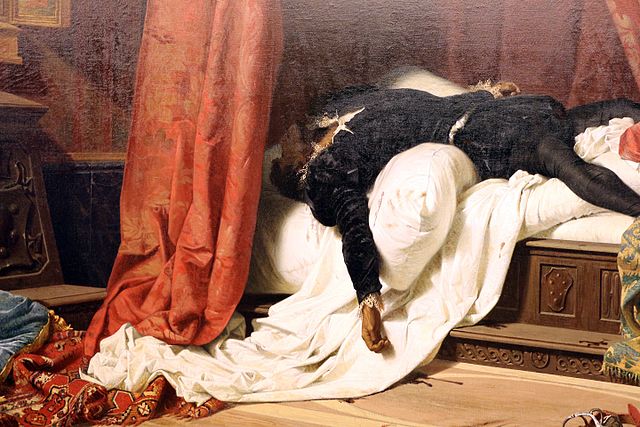
Alessandro completely trusted and admired his cousin, but that trust led to his eradication from history. As Alessandro walked into his cousin’s chamber, he plopped himself down on the bed and soon began to doze off. Lorenzino carefully crept into the room, walking toward his cousin. Taking Alessandro’s sword, Lorenzino wound his cousin’s belt around the sword’s hilt so that Alessandro would not be able to withdraw it easily. Lorenzino then crept out of his chamber and softly closed the door. That night, Lorenzino met with his accomplice, Piero di’ Gioannabbate. Lorenzino had filled Piero’s ears with grievances about an unnamed courtier who was a favorite of the Duke’s. This so-called courtier had cheated Lorenzino and interfered with his business. Piero, who owed Lorenzino favors, promised to deal with the nuisance courtier even if he is favored by the Duke. Lorenzino then told Piero that he had trapped the courtier in his chambers and that he was asleep on his bed. As both men entered the room, Lorenzino called out to the Duke, asking if he was awake. With no response, Lorenzino leaped onto the bed and plunged his sword into Alessandro’s stomach. Alessandro woke from his sleep startled. In a leap, the Duke tried to reach the chamber door. Piero quickly grabbed a nearby stool and forced Alessandro back onto the bed, slashing the Duke’s left temple down to his cheek. Lorenzino used all his weight in keeping his cousin down on the bed, covering the Duke’s mouth so that he could not scream. Alessandro then bit into Lorenzino’s thumb so hard that it caused Lorenzino to fall back onto the bed beside him, leaving both men to grapple with each other. Piero, seizing his chance, drew his sword fearfully and plunged it deep into Alessandro’s throat. As Alessandro lay there before the dead, both men quickly covered their crime by hiding the Duke’s body behind the canopy of the bed and then fled the room.2
Alessandro de’ Medici, born in 1512, was the son of Lorenzo de’ Medici and a slave who worked as a servant to the family by the name of Anna. His father during this time was the prominent Duke of Urbino, a small center near the Adriatic coast. Lorenzo was most famous, however, for inspiring Niccolò Machiavelli’s writing of The Prince. At the time of Alessandro’s birth, the Medici family had been exiled from Florence, a French army had marched its way into Italy, seizing power, and Lorenzo’s father, Piero de’ Medici, had been forced into exile. At the age of seven, Alessandro’s father died of syphilis, leaving behind the question of who would become the next Duke? Lorenzo had one daughter with his wife, Madeleine de la Tour d’ Auvergne, an heiress with a distant relation to the French royal family. Their daughter Catherine de’ Medici was only a baby when Lorenzo died, leaving the decision between two illegitimate heirs, Alessandro and his cousin Ippolito, the illegitimate son of a noblewoman. In 1512, the Medici family fought their way back into Florence, led by brothers Cardinal Giovanni de’ Medici and Duke Guliano. With the help of Spanish troops, they attacked the cities outside of Florence causing Florence to panic and accede to their terms. The following year, Cardinal Giovanni was elected pope Leo X. Growing up, Alessandro won over the Medici family, despite the conditions of his birth. He was simply seen as a member of the Medici family, regardless of the color of his skin. His cousin Ippolito, however, had a falling out with the Pope over money. Ippolito had a very lavish lifestyle and would not easily give that up. With his disagreement with current pope at the time, Pope Clement VII, Ippolito ran off to Florence where he hoped to prove himself as a worthy adversary by seizing the city and making himself appear the better successor than his cousin Alessandro. The Cardinals made a quick turn around and decided finally, after years of debating who would take up the title, that Alessandro would become the Duke of Florence to restore the name of the Medici family. In July 1531, Alessandro was officially given the title Duke of Florence.3
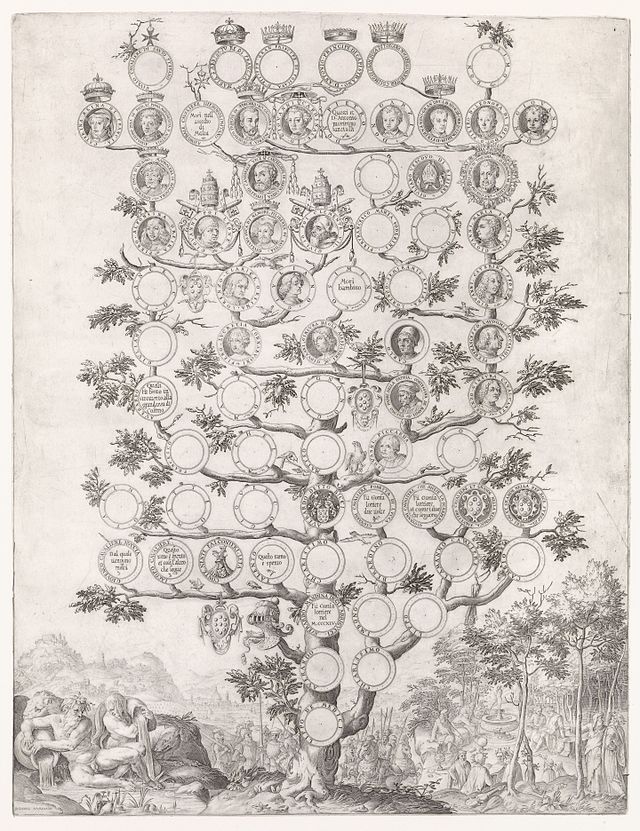
During Alessandro’s time as Duke of Florence, his government was met with some resentment and rebellion. The people of Florence disliked many of Alessandro’s governing policies, and more, they disliked his character. He was said to have been a womanizer. Duke Alessandro and those closest to him knew that he had a weakness for women. Alessandro wanted any woman he could have, even if he had to go to great lengths to seduce her. This weakness would later lead to his downfall. There was a charged atmosphere in Florence during Alessandro’s reign.4 Alessandro trusted many people, and one of those he trusted the most, whom he said he greatly “loved,” was his cousin Lorenzino di’ Piero Francesco Medici.5 Lorenzino was the scion of the cadet line of the dominant Cafaggiolo branch of the Medici family. He grew up enjoying wealth and power. But his father had lost all of his inheritance before dying. Lorenzino grew up forced to look at the rewards enjoyed by his distant cousins Ippolito and Alessandro. Despite his early lack of fortune, Lorenzino grew close with many of those in the Medici family with power, especially Alessandro.6 After he was kicked out of Rome, he returned to Florence. When he returned to his cousin, it was said that both men were always stuck together. Lorenzino had appeared to influence many of Alessandro’s political decisions and Alessandro never decided important matters without Lorenzino.7 To the outside world, all was well in the relationship between the two cousins. The reason that Lorenzini assassinated his cousin is still debated. After the murder and his exile for three years, Lorenzino wrote a letter called the “Apologia” explaining his reasoning behind killing his cousin. He states that his reasoning was to restore Florence to Republican liberty. Many Florentines had been unhappy with the current government under Alessandro’s reign when Lorenzino killed his cousin, and he was met with praise from many in Florence for getting rid of the Duke in a tyrannicide. Many historians question whether that was his real motivation to kill Alessandro, because of his relationship with his cousin and the nature of his “Apologia.” His letter to Florence defends himself instead of his justifying the killing of his cousin. Whether he murdered out of personal reasons such as revenge or jealousy or out of civic duty is a secret that died along with Lorenzino.8
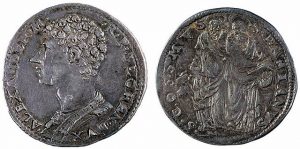
After killing his cousin, Lorenzino and his accomplice Piero di’ Gioannabbate, quickly fled Florence for Bologna. Word quickly spread about the Duke’s assassination and his unknown murders. They both went separate ways after a few years, and then never heard from each other again. For the next eleven years, Lorenzino lived in exile from the city of Florence with the sympathy and appreciation of the people of Florence for killing their “oppressor.” After his “Apologia” was sent to Florence, many compared the acts of Lorenzino to another historic figure in their history. Marcus Junius Brutus is the famed assassin of Julius Caesar. The fact that both men killed someone who was personally close to them and whose victims trusted them without a thought excited the people of Florence. The citizens of Florence commemorated Lorenzino’s actions by saying “he is our Brutus,” and they made medals showing the Medici wearing the Roman style of robes, with an imprinted inscription, “VIII idus Ianuarii,” corresponding to the date January sixth in the Roman calendar.
However, one reaps what one sows. Since the death of Duke Alessandro, many have wanted to avenge the fallen duke, no one more than the Duke’s successor, Cosimo I de’ Medici. It was never confirmed, though highly suspected, that Cosimo hired two men to kill his predecessor’s assassin. Cosimo and his men had played off as being passive toward Alessandro’s killer, while privately they potted to avenge the Duke. Cosimo hired through channels two assassins by the names of Bebo and Cecchino. Both men arrived in Venice, at the current residence of Lorenzino, in December 1547. They took up lodgings near the residence of Lorenzino and began watching his moves over the next two months. Finally, on February 26, 1548, Bebo and Cecchino awaited their unsuspecting victim outside the exit of the church San Polo. Once Lorenzino walked out of the church, both men attacked Lorenzino and his uncle Alessandro Soderini. They walked both men a short distance to San Tommaso near the ascent of a bridge. Lorenzino and his uncle were armed and quickly reacted to the two assailants. Lorenzino was instantly rendered powerless by a strike to the head and was finished off by multiple stabbings by both assailants. While Lorenzino lay dying, both men let Lorenzino’s uncle go because Lorenzino’s uncle had nothing to do with Alessandro’s murder. The uncle then fled to get help for his nephew. Lorenzino’s mother, Maria Soderini, was the first to arrive at the scene an hour after the attack, heartbroken and in agony.9
For many centuries it was unknown who ordered Lorenzino’s assassination until evidence came to light of the letters written by Cosimo discussing the plot to murder Lorenzino. These letters had been sent by Cosimo to many prominent figures and the assailants themselves, thanking and congratulating them on killing the man who killed Alessandro.10 Alessandro de’ Medici was the first and last black prince of the Medici family to be given the opportunity and power to lead an important Italian society. His life and accomplishments were quickly covered up by those who placed him in power and he was largely forgotten in Italian history.
- Stefano Dall’Agilo and Donald Weinstein, The duke’s assassin: exile and death of Lorenzino de’ Medici (Yale University Press, 2015), 3-4. ↵
- Catherine Fletcher, The Black Prince of Florence: The Spectacular Life and Treacherous World of Alessandro De’ Medici (New York: Oxford University Press, 2016), 3-5. ↵
- Catherine Fletcher, The Black Prince of Florence: The Spectacular Life and Treacherous World of Alessandro De’ Medici (New York: Oxford University Press, 2016), 15-21. ↵
- Catherine Fletcher, The Black Prince of Florence: The Spectacular Life and Treacherous World of Alessandro De Medici (New York: Oxford University Press, 2016), 177. ↵
- Stefano Dall’Agilo and Donald Weinstein, The duke’s assassin: exile and death of Lorenzino de’ Medici (Yale University Press, 2015), 2. ↵
- Nicholas Scott Baker, “Writing the Wrongs of the past: Vengeance, Humanism, and the Assassination of Alessandro de’ Medici,” The Sixteenth Century Journal 28, no. 2 (July 1, 2007): 310. ↵
- Stefano Dall’Agilo and Donald Weinstein, The duke’s assassin: exile and death of Lorenzino de’ Medici (Yale University Press, 2015), 2. ↵
- Nicholas Scott Baker, “Writing the Wrongs of the past: Vengeance, Humanism, and the Assassination of Alessandro de’ Medici,” The Sixteenth Century Journal 28, no. 2 (July 1, 2007): 318-319. ↵
- Stefano Dall’Agilo and Donald Weinstein, The duke’s assassin: exile and death of Lorenzino de’ Medici (Yale University Press, 2015), 165-166. ↵
- Stefano Dall’Agilo and Donald Weinstein, The duke’s assassin: exile and death of Lorenzino de’ Medici (Yale University Press, 2015), 176-179. ↵
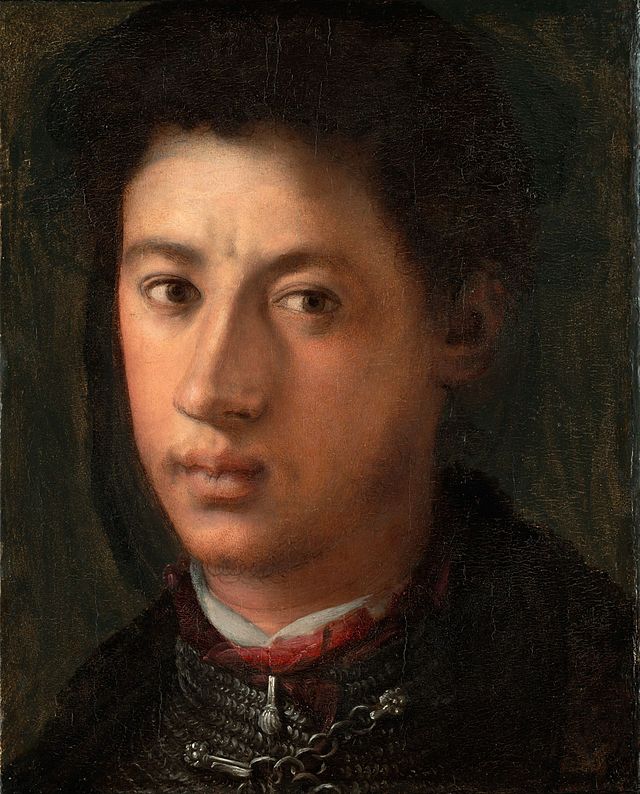


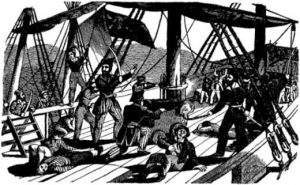
14 comments
Kelly Arevalo
Hello Jadyn, I liked your article! It was really engaging and informative. I had no idea who Alessandro was before reading this, so, thanks to your article I’ve learned a bit more about the Medici Family. I think it’s interesting how linked this family was to Rome. I know the catholic church played a very important political role during those years, so seeing how many popes came from this family helps you measure how influential this family actually was, and explains why it took them so long to decide who would be the most suitable person to succeed the former Duke. Once again, great article!
Gabriella Parra
I love the way you structured this article! It really kept me interested. Every time I asked a question, you answered it in the next beat. It’s interesting how Lorenzino murdered his cousin even though it wouldn’t reward him. I’d figure losing money and power at a young age would make him greedy for control. But this doesn’t seem to be the reason for Alessandro’s death as Lorenzino did not try to seize power afterwards. I’m also surprised that these noblemen were not able to cover their tracks sufficiently enough.
Madison Goza
Your article was such a fascinating read! Your title instantly captured my attention and drew me in! I knew about some of the scheming and corruption within the Medici family, but never knew anything about murders amongst the family. I liked how you opened your article with the moment before the murder and then explaining the details of his life and his family. The uncertainty behind the motives of the murder is another interesting detail that I wasn’t expecting. Your conclusion was especially powerful, with the last two lines raising the larger questions of memory and legacy. Great article!
Maria Luevano
what an interesting article! I have never heard this story before or of Lorenzino de’ Medici and his illegitimate son. It is a shame that this story is not recognized more in history, as it shows the politics behind the royalties. Italy during the renaissance era was certainly not a place of peace, which would, unfortunately, lead to a death.
McKayla Rodriguez
I had never heard of the half black Italian prince from the Medici family, but it was very interesting, and I had so much respect because today, in society, it’s difficult to find people who are culturally diverse be accepted into roles of leadership. Although his death was unfortunate, to learn about his life story was enjoyable.
Paul Garza
Such a great article that really gives voice and revives the experience of a black prince of the Medici family! This was a very detailed article with great use of supplemental images. I really appreciate that you explain how Alessandro of the Medici family came to power as duke. It’s interesting to learn that people did not like his character and that he was known as a womanizer. I wonder if this image that history has portrayed of Alessandro is accurate or if his image was painted this way due to people who did not like him for being black?
Leopoldo Martinez-Milland
Jadyn did a great job showcasing a person I have never heard of in Alessandro de’ Medici and the fact that the Duke of Florence was not only half black, but also the illegitimate son of Lorenzo was definitely a reason on why he was assassinated. I did find it interesting that my presumption that his dark complexion being the reasoning for his death had more to do with a power struggle than the his skin tone. One can make the argument that the reasoning for murder in 1530s Italy is more progressive than it is now in modern day United States.
Hali Garcia
This was an amazing article. I never knew there was a half black Italian Prince so I learned a lot from this article. I really love learning about the Medici family even though I had to look up some of these people because I kept confusing the family members. I honestly had no idea that Lorenzo had an illegitimate son. Great job and congratulations on the nomination, it was well deserved.
Jaedean Leija
Learn about this man and how his life ended was very interesting I feel like more people should know about him and the fact that I had no idea his dad was Lorenzo De Medici is mind blowing. You opened the eyes of many readers about him and what happened , for you to do your research must have been hard because not many people know of him and the sources are probably limited but great job on this well informed article.
Phylisha Liscano
A very interesting article. I had no prior knowledge of your topic and it was very interesting learning about there being a half black Italian Prince who was assassinated. I enjoyed getting the chance to read your article and taking a look at the images you provided. Overall excellent article, I enjoyed getting the chance to read it.